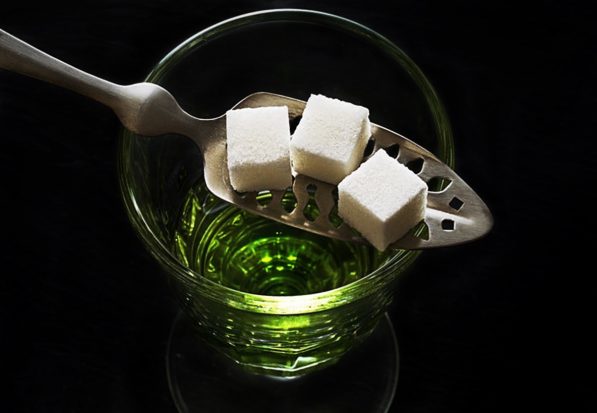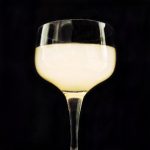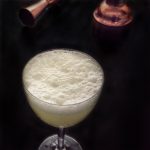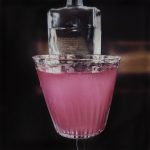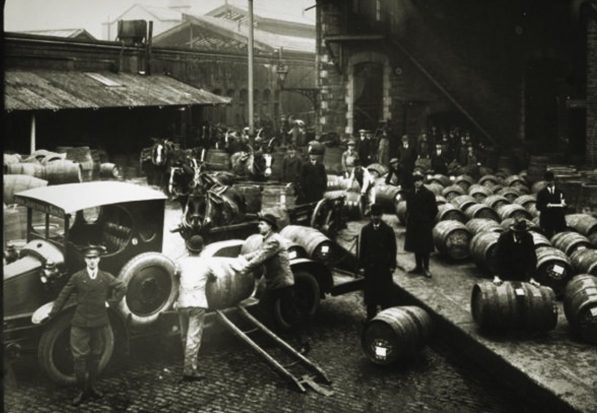No other spirits conjures more myth, fable, supposition or contention than Absinthe.
Known colloquially, as The Green Fairy. La Fée Verte or the Green Goddess, Absinthe conjured up images of bohemian Parisian salons filled with artists searching for their muse.
In fact, some believe that Absinthe leaks from the pages and the canvases of some of the early twentieth century’s greatest creatives.
The luminous green spirit was said to inspire writers as varied as Paul Verlaine, Émile Zola, Alfred Jarry and Oscar Wilde and shaped the artistic movements of Symbolism, Surrealism, Modernism, Impressionism, Post-Impressionism and Cubism.
But researchers believe that the effects of Absinthe were quite literally all in their head. Anyone trying to find creative inspiration from Absinthe, would most probably find bemusement rather than a muse.
Thanks to a combination of prohibitionist sentiment and some drastically distillation, it was banned throughout much of Europe and the United States for most of the 20th century.
In 2007 it once again became legal to sell absinthe in the US, which co-insided nicely with the craft cocktail revolution and the desire to resurrect some of these long-forgotten spirits. Since then it’s been a veritable gold rush, with brands new and old vying for the top spot in this newly-opened market.
So what is Absinthe?
The name Absinthe derives from the Latin Artemisia absinthium, It is basically a high-proof spirit infused with a whole bunch of herbs, spices, and other botanicals that give it its distinctive licorice flavor and emerald color. Chief among those (in classic absinthes, anyway) are grand wormwood, green anise, and florence fennel. Grand wormwood, in particular, has long been seen as the defining ingredient in absinthe, and it’s also been the source of most of the controversy that led to it being banned in the first place.
The grande wormwood, imparts a minuscule amount of thujone, a neurotoxin that is often blamed for absinthe’s most notorious effects. Today, the amount of Thujone that can be used in Absinthe is restricted by law. The interesting thing though is that there’s not much evidence that old-fashioned absinthe had substantially more thujone than its modern descendants. So while today’s absinthe is definitely not a deadly poison, it’s probably no more dangerous than the old stuff.
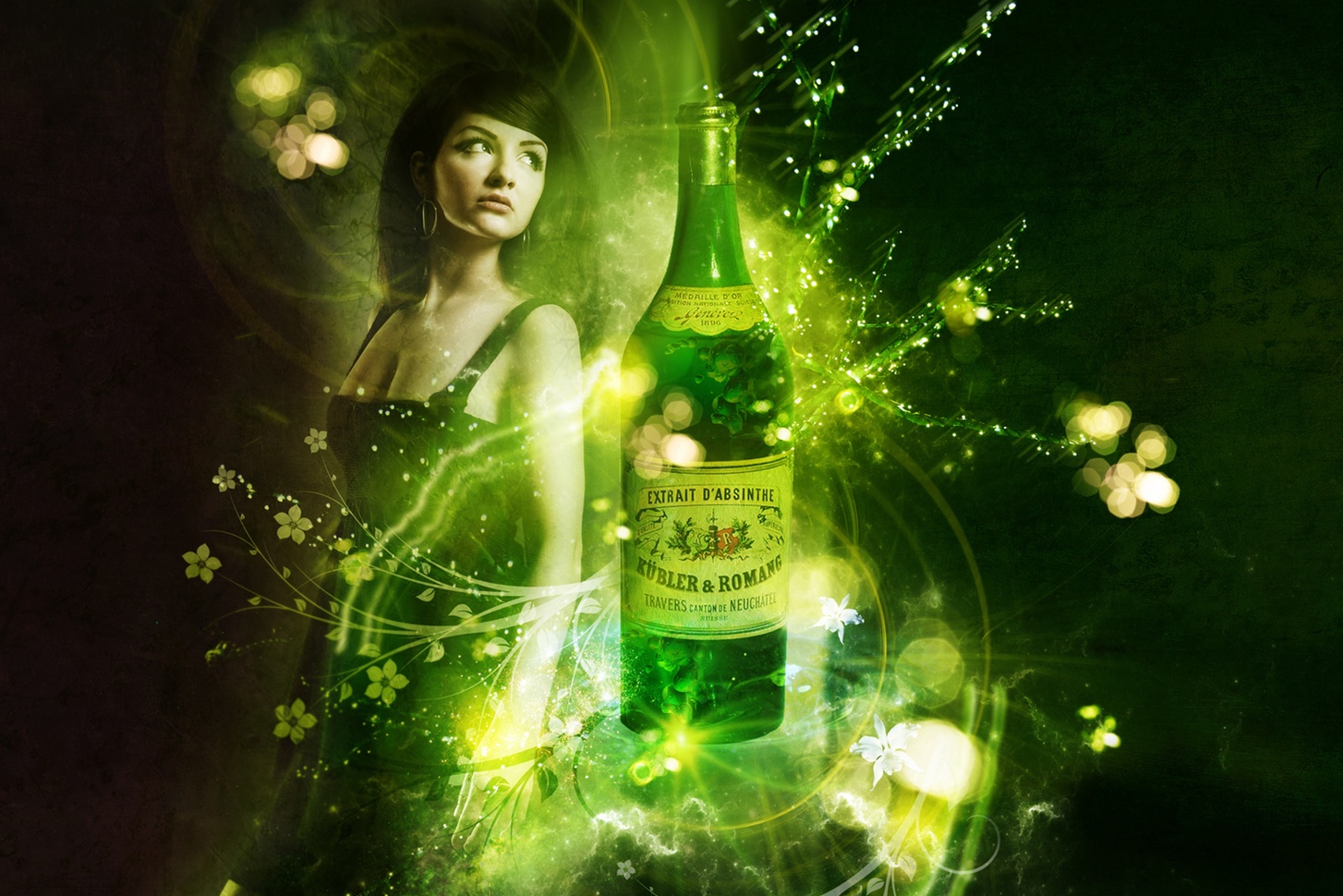 PIN IT
PIN ITAbsinthe advertising – Chris Nurse
How is Absinthe made?
The production of absinthe is much like that of gin: it is a high-proof, neutral spirit that is infused with a blend of botanicals, including wormwood, and redistilled.
Traditionally, absinthe starts from a neutral eau-de-vie, an un-aged brandy distilled from wine grapes. Whatever herbs the distiller wants to use (aside from that “holy trinity” of wormwood, anise, and fennel, it’s pretty much dealer’s choice) are then added to the spirit and macerated—soaked until they’re soft and falling apart, essentially. The infused spirit is then re-distilled, which removes most of the highly bitter flavours imparted by the herbs.
Traditionally, the alcohol is infused a second time and another round of herbs (usually not the bitter holy trinity herbs) are steeped in the spirit. The chlorophyll from these herbs imparts the absinthe’s famous green colour, as well as whatever flavours they have to offer. Many modern producers skip this final step and use dyes instead.
There are also white absinthes, which are bottled without secondary maceration and are known as absinthe blanche or absinthe la bleue, but they’re quite a bit less common than their green counterparts these days.
 PIN IT
PIN ITThe Absinthe Drinker By Viktor Oliva
So why all the controvacy?
In the 1800s in Europe, Absinthe became a favourite of artists, writers and bohemians. It was mistakenly believed to have hallucinogenic properties.
While it may have an illicit reputation, Absinthe was no more likely to make you see things than Vodka, Whiskey, Tequila or Rum. It is commonly believed that it wasn’t the thujone in the spirit that was causing the problems but instead the distillation.
In the same way that improperly distilled moonshine can cause blindness and neurological disorders, it is believed that Absinthe’s reputation more often than not simply came from sloppy distillation techniques.
So don’t let people tell you modern Absinthe, isn’t real Absinthe – it is and in fact, according to expert Ted Breaux, we’re living in a golden age of the green stuff. “A few exceptions aside, the quality and authenticity of absinthes found in the U.S. market is very good,” he told Liquor.com.
So if it’s completely safe, what does it taste like?
The flavour of Absinthe is primarily that of Aniseed and Fennel, enhanced with the floral and herbal notes of the wormwood and any other herbs added. It is normally drunk as an aperitif in the La Louche tradition, but Absinthe is also wonderful in cocktails where it is often used as a rinse (the glass is coated with Absinthe, then discarded) so as to impart a subtle flavour.
The thing to keep in mind with Absinthe is that the alcohol content is often higher than with most other spirits, so if you are drinking it as an aperitif, you should drink it slowly and savour it. It will probably get you drunker (faster) than you realise, as these guys demonstrate in this Buzzfeed clip below.






